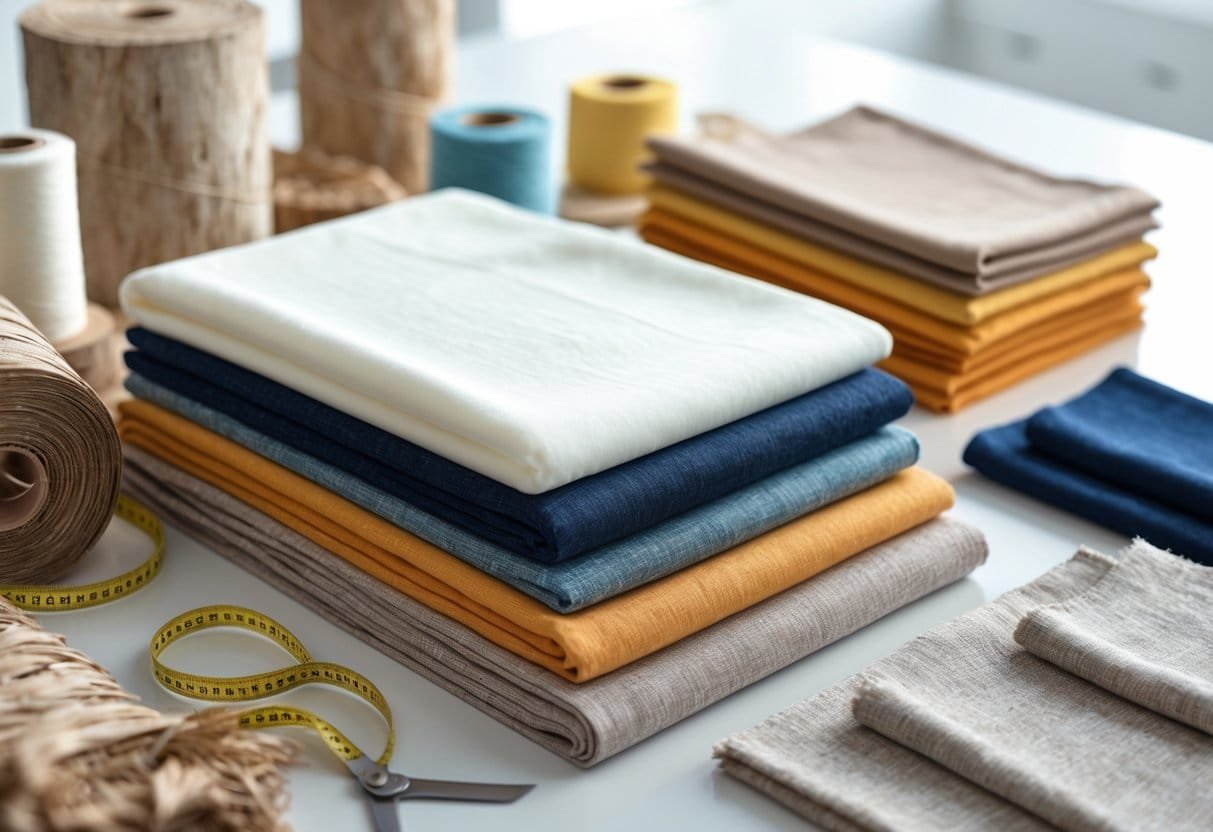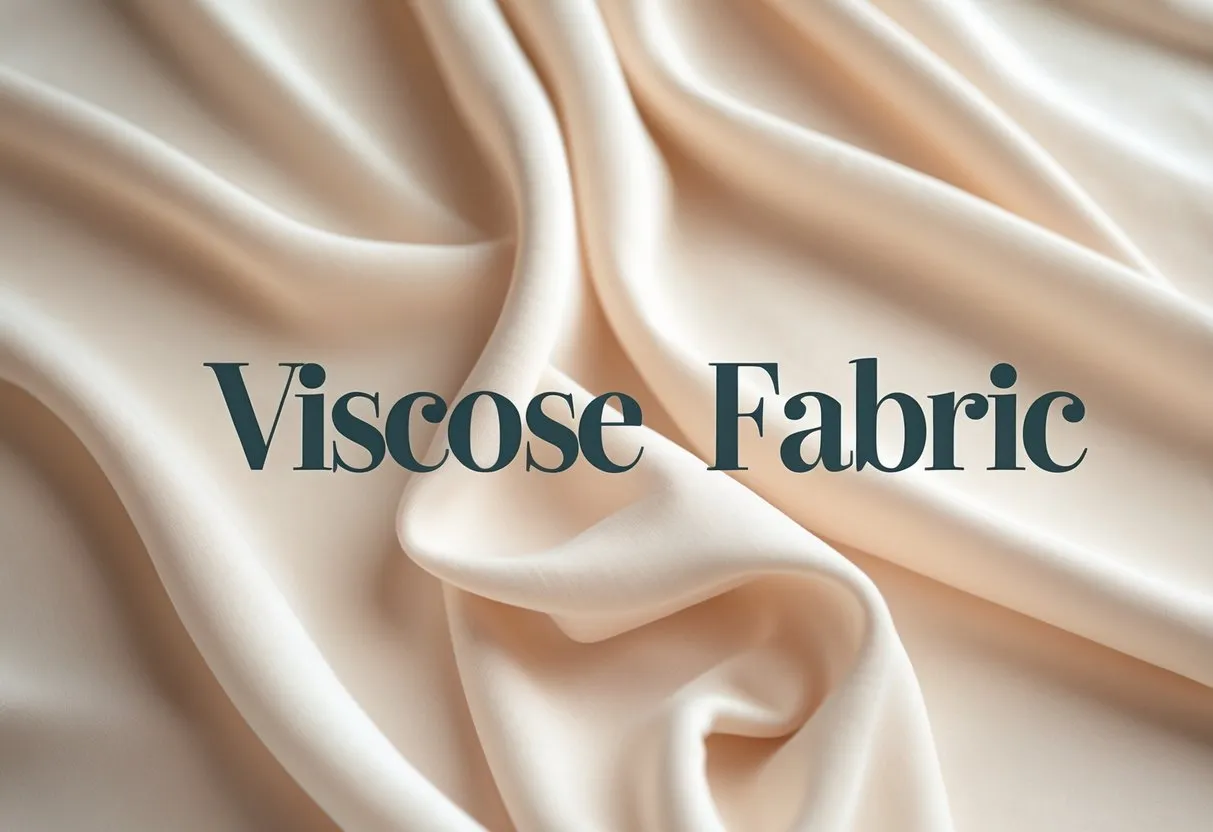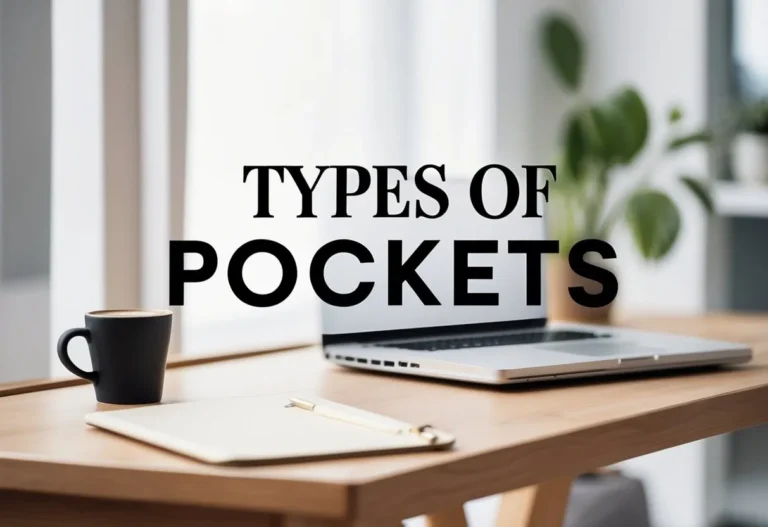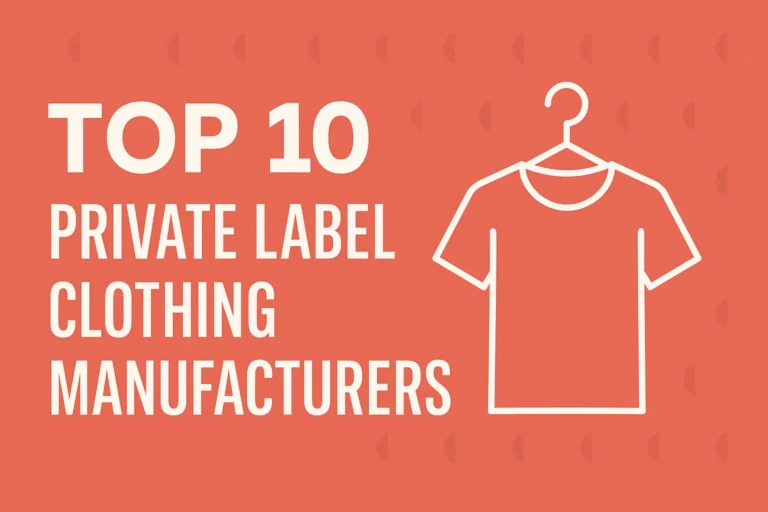The Complete Guide to Viscose Fabric for Modern Clothing
Viscose is a type of fabric made from wood pulp that has been chemically processed to create a soft, silk-like material. It is often called artificial silk because it looks and feels similar to natural silk but costs less. Viscose is valued for its smooth texture, breathability, and versatility in fashion and home textiles.

The process to make viscose involves turning natural cellulose from wood pulp into fibers through several chemical and mechanical steps. This transformation allows viscose to combine qualities of both natural and synthetic fabrics. While popular for its feel and affordability, viscose production also raises important environmental concerns due to its chemical use.
This fabric appears in many clothing items like dresses, tops, and blouses, offering a lightweight option that drapes well and absorbs dye vividly. Understanding what viscose is and how it is made helps consumers and designers appreciate its benefits and limitations in today’s textile industry.
Table of Contents
Key Takeways
- Viscose is a fabric made from chemically treated wood pulp with a silk-like feel.
- The production involves multiple chemical steps to turn natural cellulose into fiber.
- Viscose is widely used in fashion but has environmental challenges.
What Is Viscose Fabric?

Viscose fabric is known for its smooth texture and ability to mimic natural fibers like silk. It balances the use of natural raw materials with a chemical process, resulting in a fabric that is soft, breathable, and versatile. Its origins and production set it apart from fully synthetic and fully natural fabrics.
Definition and Key Characteristics
Viscose is a type of semi-synthetic fabric made from wood pulp, primarily from trees like beech, pine, or eucalyptus. It is prized for being soft, lightweight, and breathable. Viscose has a smooth and silky feel but is more affordable than pure silk.
Important qualities include:
- High absorbency, making it comfortable in warm weather
- Breathability that stops heat from being trapped
- A lustrous sheen that gives garments a luxury look
- Tendency to wrinkle and weaken when wet, requiring careful handling
Viscose blends well with fibers like cotton and polyester to improve stretch and durability.
Origins as Artificial Silk
Viscose was first created in the late 1800s as an inexpensive alternative to silk, earning the name “artificial silk.” The goal was to produce fabric with silk’s drape and shine but at a lower cost. It quickly became popular in textiles and fashion due to its softness and elegant appearance.
Despite the artificial name, the base material is natural wood pulp, but the manufacturing process uses chemicals to transform the pulp into fiber. This innovation allowed more people access to fabrics with qualities similar to silk without the high price tag.
Viscose as a Semi-Synthetic Fiber
Viscose stands between natural and synthetic fibers, classifying it as a semi-synthetic fabric. Though derived from natural wood pulp, viscose is heavily processed through chemical treatments, including sodium hydroxide and carbon disulfide, to turn the raw material into usable fiber.
This process differentiates viscose from fully synthetic fabrics like polyester, which are made from petroleum-based products. The semi-synthetic nature of viscose gives it a balance of natural feel and manufacturing versatility, but the chemicals involved can raise environmental concerns. Nonetheless, viscose remains popular for its softness, drape, and affordability.
How Viscose Is Made

Viscose production starts with extracting cellulose from wood pulp and involves a chemical process to transform this natural material into fibers. The method requires specific substances and precise steps, and recent innovations aim to reduce its environmental impact through recycling and chemical recovery.
Raw Materials: Wood Pulp and Cellulose
Viscose begins with cellulose, a natural polymer found in plants. The primary source is wood pulp, often taken from trees like beech and eucalyptus. These woods are chosen for their high cellulose content and fast growth.
The pulp is purified to remove lignin and other impurities. This clean cellulose will form the base for viscose fiber. Sustainability concerns arise because cutting down trees affects forests, though some manufacturers use managed plantations to reduce harm.
Cellulose serves as the essential building block, making viscose different from fully synthetic fabrics, which rely on petrochemicals.
The Chemical Process: Key Steps and Substances
The purified cellulose is treated with sodium hydroxide (caustic soda) to form alkali cellulose. After pressing and shredding, the cellulose is allowed to age under controlled oxygen, breaking down its molecular weight.
Next, carbon disulfide is added to convert alkali cellulose into cellulose xanthate, a crucial intermediate. This step dissolves cellulose into a viscous, thick liquid called the viscose solution.
The solution is ripened at cool temperatures and then filtered to remove impurities and air bubbles. Precise chemical control is needed to prepare this solution for fiber formation.
Formation of Viscose Fibers
The viscose solution is forced through spinnerets into a spin bath containing sulfuric acid, sodium sulfate, and zinc sulfate. This bath causes cellulose xanthate to break down, regenerating cellulose fibers.
As fibers form, they solidify and are then washed thoroughly to remove leftover chemicals. The final product is soft, breathable fiber suitable for textiles.
The wet-spinning process requires careful timing and temperature control to ensure good fiber quality with proper strength and moisture absorption.
Closed-Loop Systems and Innovations
Modern viscose production increasingly uses closed-loop systems to capture and recycle harmful chemicals, especially carbon disulfide and sodium hydroxide. These systems limit environmental pollution and improve worker safety by reducing toxin release.
Innovations also focus on using wood from sustainable sources and improving the efficiency of aging and bleaching steps. Recycling used viscose garments into new fibers is another developing field, aiming to reduce waste and resource use.
These advances help lower the environmental footprint of viscose while maintaining its desirable fabric qualities.
Types and Variants of Viscose

Viscose fabric comes in several forms, each with unique features and uses. These types vary based on the source of the raw material and the production process, affecting durability, softness, and environmental impact. Some are more eco-friendly, while others offer specific qualities like stretch or sheen.
Standard Viscose
Standard viscose is made from wood pulp, usually from trees such as beech or pine. It undergoes a chemical process to turn the natural cellulose into fibers. The result is a soft, lightweight fabric that drapes well and feels smooth against the skin.
This type of viscose is versatile and common in clothing like dresses, blouses, and linings. However, its production can involve chemicals that require careful disposal. It absorbs moisture well but can wrinkle easily and may lose strength when wet.
Modal and Modal Viscose
Modal is a type of viscose fiber made from beech tree pulp. It is treated to be stronger and more durable than standard viscose. Modal viscose offers a silk-like softness, high breathability, and better resistance to shrinking and pilling.
This variant is popular in underwear, activewear, and bed linens because it holds color well and has a smooth texture. It retains moisture without feeling damp, making it comfortable for everyday wear. Modal is often blended with cotton or other fibers to increase durability.
Lyocell and Tencel
Lyocell is a newer type of viscose fiber made through a more environmentally friendly process that recycles water and reuses chemicals. Tencel is a branded form of lyocell, often made from eucalyptus trees known for fast growth and low water needs.
Lyocell and Tencel fibers feel soft and cool to the touch. They resist wrinkles and are strong even when wet. These fabrics are used in a wide range of products, from fashion to home textiles. They are also popular for being sustainable and hypoallergenic.
Bamboo Viscose and Other Sources
Bamboo viscose is made by chemically processing bamboo plant fibers into soft, fiber strands. It shares many qualities with standard viscose but can vary in texture depending on production. Bamboo viscose offers natural antibacterial properties and moisture-wicking ability.
Other sources for viscose fibers include eucalyptus and pine, but bamboo remains a well-known alternative due to its fast growth. These plant-based viscose fabrics provide a renewable option but still require chemical processing, so their sustainability depends on the methods used.
Viscose in Textiles and Fashion

Viscose plays an important role in many areas of textile and fashion. It is valued for its soft feel and good drape, making it useful in different types of clothing and home goods. Its ability to blend well with other fibers adds to its versatility.
Clothing and Fashion Applications
Viscose is widely used to make dresses, blouses, skirts, and formal wear due to its smooth drape and silk-like finish. It is favored in viscose satin and viscose jersey fabrics, which offer a comfortable fit and elegant look.
The fabric’s breathability makes it a good choice for summer clothing and layering. It often appears in activewear and loungewear because of its lightweight feel and ability to regulate temperature.
Viscose clothing provides an affordable alternative to silk. Its ability to absorb dyes well allows for vibrant colors in fashion designs. However, it is less durable than some synthetic fabrics, so it requires careful washing.
Home Textiles and Upholstery
Viscose is also found in home textiles like curtains, cushions, and upholstery. Its softness and sheen give furniture and decor a luxurious look without high cost.
The fabric’s natural fiber base helps it feel breathable, which benefits upholstery used in warmer climates. While it adds elegance to home items, viscose textiles can be less resistant to wear compared to pure synthetic materials.
Because of its versatility, viscose is chosen for items needing a balance of style and comfort. It can imitate the texture and shine of silk in interior design and stays popular for its aesthetic appeal.
Blends With Other Fibers
To improve strength and care qualities, viscose is often blended with fibers like cotton, polyester, or wool. These blends combine the best of both worlds: softness and breathability from viscose, with durability or wrinkle resistance from the other fibers.
Blended viscose fabrics are common in both fashion and home textiles. For example, adding polyester helps viscose resist shrinking and wrinkling, while blending with cotton keeps the fabric breathable and comfortable.
These combinations expand the uses of viscose, allowing it to meet different demands in textile performance. They create fabrics suited for a range of products from casual wear to durable upholstery.
Properties and Benefits of Viscose

Viscose fabric offers a blend of qualities that make it attractive for many uses. It feels soft, handles moisture well, drapes smoothly, and accepts colors easily. Its care needs are important to understand to keep it looking its best.
Silk-Like Feel and Appearance
Viscose has a smooth, soft texture often compared to silk. It looks shiny and elegant, giving clothing a luxurious appearance at a lower cost than real silk. This makes viscose a popular choice for dresses and blouses where a silky look is desired.
The fabric’s surface reflects light, which adds to its glossy finish. While it feels lightweight, it can still have enough weight to hang nicely. This quality helps garments made from viscose appear polished and refined.
Breathability and Moisture Absorption
Viscose is moisture absorbent, which allows it to breathe well. It can take in sweat and water from the skin, helping to keep the wearer cool and dry. This makes it comfortable for warmer weather or active wear.
Its breathability compares favorably to natural fibers like cotton. However, when wet, viscose can feel heavier and weaker, so it should be cared for properly to maintain its durability.
Drape and Comfort
Viscose drapes softly and flows smoothly over the body. This makes it a preferred fabric for clothing that needs to fit gently or create fluid shapes. The fabric’s flexibility adds to wearing comfort and style.
Because viscose is lightweight yet drapes well, it can create flattering silhouettes without stiffness. Its softness also contributes to a pleasant feel against the skin, making it suitable for both casual and formal wear.
Ease of Dyeing and Care Considerations
Viscose is easy to dye, accepting bright and rich colors with good colorfastness. It allows designers flexibility in creating bold or subtle color patterns. The fabric’s ability to hold dyes well makes it versatile for fashion.
However, viscose wrinkles easily and may shrink if not handled carefully. It often requires gentle washing or dry cleaning. While it looks beautiful and soft, proper care involves avoiding high heat during ironing and drying to preserve the fabric’s shape and finish.
Sustainability and Environmental Considerations

Viscose has clear benefits, but its production raises important environmental concerns. These include the heavy use of chemicals, risks to forests, and steps the industry is taking to become more sustainable.
Environmental Impact of Viscose Production
Viscose production uses toxic chemicals like carbon disulfide and sodium hydroxide. These chemicals can pollute air and water if not managed properly. The process also consumes large amounts of water and energy.
Factories with poor regulations often release harmful waste into the environment, affecting communities and ecosystems nearby. Workers may face health risks from chemical exposure without sufficient safety measures.
Efforts to improve production include recycling chemicals and reducing water use. Still, the environmental cost remains high in many regions. Consumers are advised to look for brands that use cleaner manufacturing practices or certifications.
Deforestation and Responsible Sourcing
The raw material for viscose is wood pulp, usually from fast-growing trees like eucalyptus or beech. Unsustainable logging can lead to deforestation, harming biodiversity and contributing to climate change.
Some producers source pulp from plantations certified by organizations like the Forest Stewardship Council (FSC). These certifications ensure wood comes from responsibly managed forests.
Responsible sourcing reduces deforestation risks but is not yet standard practice in the entire industry. Transparency in supply chains is improving, helping consumers identify better choices.
Move Toward Sustainable Viscose
The textile industry is investing in more eco-friendly viscose options, such as lyocell and modal, which use less harmful chemicals. New closed-loop manufacturing recycles solvents to reduce pollution.
Sustainable viscose focuses on both raw materials and cleaner production methods. Companies increasingly aim for certifications that prove environmental and social responsibility.
Innovation in viscose production aims to balance affordability, quality, and lower environmental impact. Progress depends on stricter regulations and consumer demand for transparency.
Frequently Asked Questions
Viscose is made through a chemical process that is different from natural fibers like cotton. Its environmental impact depends on how the chemicals are managed. Some versions are more eco-friendly than others. Viscose shares many qualities with rayon but also has differences. How it feels depends on the climate it is worn in. Whether viscose breaks down naturally depends on its production and treatment.
How does the production process of viscose differ from cotton?
Viscose starts as wood pulp, which is dissolved in chemicals to make a thick liquid. This solution is then spun into fibers.
Cotton is grown as a natural fiber directly from cotton plants and is spun into thread without heavy chemical processing.
Viscose requires more chemical steps than cotton, which is mostly natural and processed with fewer chemicals.
What are the potential environmental impacts of producing viscose fabric?
Viscose production can release harmful chemicals, like carbon disulfide, which damage air and water quality if not controlled.
Wastewater from viscose factories can pollute rivers if untreated.
Some factories now use closed-loop systems to recycle chemicals and reduce pollution.
Can viscose be considered an eco-friendly material?
Viscose is not always eco-friendly due to its chemical use and water pollution risks.
Eco-friendly viscose comes from sustainable wood sources and uses cleaner production methods.
Products labeled Lyocell or Modal are more eco-friendly types of viscose.
What are the distinctive properties that differentiate viscose from rayon?
Viscose is a type of rayon. Rayon is a wider category of regenerated fibers made from cellulose.
Viscose tends to be softer and shinier than some types of rayon.
The terms are often used interchangeably, but viscose refers specifically to one method of making rayon fibers.
How does viscose perform in different climates, such as summer heat or winter cold?
Viscose is breathable and absorbs moisture well, making it comfortable in hot weather.
It can feel cool on the skin but may not retain heat well in cold weather.
In winter, viscose is best worn layered with warmer fabrics.
What determines the biodegradability of viscose fabrics?
Viscose is made from natural cellulose, so it is generally biodegradable.
However, added chemicals and finishes can slow down or prevent breakdown.
The biodegradability depends on how much chemical treatment the fabric has undergone.







